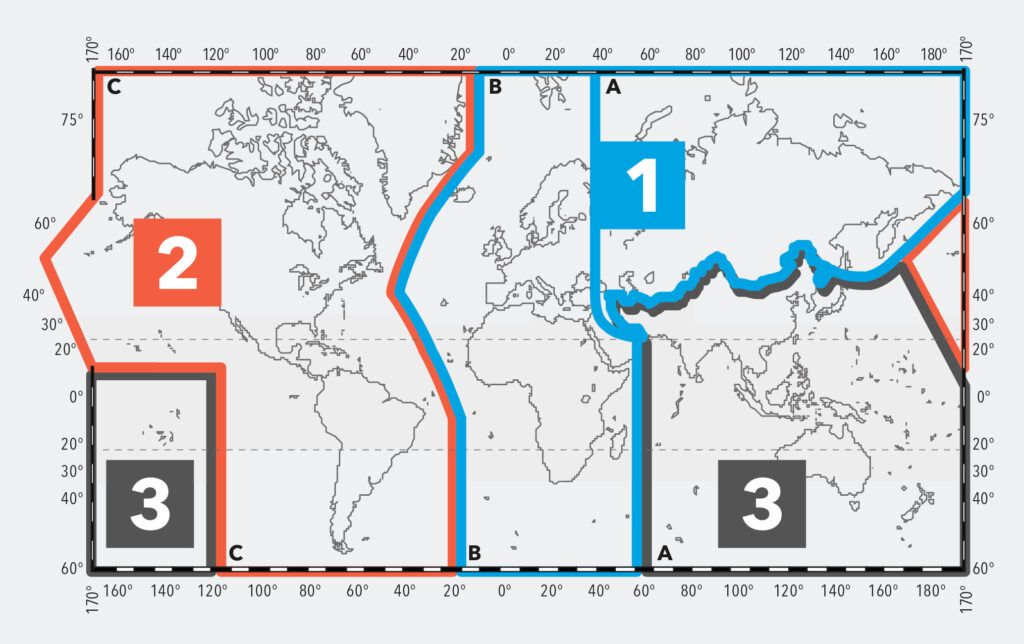
ITU helps countries achieve robust radio frequency planning
From mobile communications and broadcasting to navigation systems to aeronautical and maritime mobile services to satellite services, the radio spectrum is the backbone of modern society.
Effective management of radio frequencies is crucial for the seamless operation of countless technologies in today’s highly interconnected world.
Frequency planning ensures that this limited and valuable resource is shared efficiently and equitably among countries and radio services worldwide.
To support radiocommunications regulators, the International Telecommunication Union (ITU) held a three-part series of regional workshops on this vital aspect of Radio Regulations implementation.
The workshops – one for each Radio Regulations region – were designed to assist administrations in updating or developing their National Tables of Frequency Allocation, or NTFAs, based on the recently revised international table in the latest, 2024 version of the Radio Regulations.
Why NTFAs matter
Establishing and updating NTFAs is one of the most critical steps each country takes in carrying out its role and obligations in the global management of the radio spectrum.
Produced by national regulatory authorities, NTFAs are detailed documents that outline planned uses and allocations of spectrum among various radio services within the regulatory authority of that administration. Those allocations are made in accordance with each country’s rights and treaty obligations as a party to the international Radio Regulations treaty, while also reflecting specific national priorities.
“NTFAs are essential tools for managing the radio spectrum, ensuring efficient use, and preventing interference between different types of radio communications systems,” says Mario Maniewicz, Director of the ITU Radiocommunication Bureau.
They are key for spectrum management at the national level and should be updated regularly to align with the latest version of the Radio Regulations, particularly Article 5 – Table of Frequency Allocations.
Given that radio frequencies do not respect national borders, regulators benefit greatly in the NTFA development process from information sharing, collaboration with other affected administrations, and by the creation of regional frameworks.
The Radio Regulations are revised and updated every four years at ITU’s World Radiocommunication Conference, and national tables should be updated within the same cycle.
Addressing NTFA capacity challenges
Some countries struggle in updating their NTFAs. Common challenges include limited awareness about the role and importance of the tables, a lack of qualified and dedicated staff for table updates and maintenance, limited access to software tools for spectrum management, and insufficient awareness of the Radio Regulations.
The recent ITU NTFA workshops aimed to address some of these challenges through comprehensive training. Participants received tutorials and hands-on training on various spectrum management and software tools developed by ITU’s Radiocommunication Bureau.
Each of ITU’s three Radio Regulations regions received dedicated training, with workshops taking place in Addis Ababa, Ethiopia, for Region 1 (Africa, Europe, and Middle East); in Mexico City, Mexico, for Region 2 (the Americas); and in Shenzhen, China, for Region 3 (Asia-Pacific and Oceania).
The Radio Regulations, divides the world into three ITU regions for the purposes of managing the global radio spectrum. The international (Article 5) Table of Allocations includes frequency allocations at global and regional levels, including some sub-regional and national deviations.

Spectrum demand on the rise
More than just a technical document; the NTFA is a cornerstone of every country’s national telecommunications policy.
“The rapid pace of technological advancement means that the demand for spectrum is continually increasing,” says Maniewicz. “Regular updating of the National Tables of Frequency Allocations is essential to ensure that national spectrum resources are used efficiently and effectively, and in accordance with the international Radio Regulations.”
Keeping your NTFA updated is key to preventing harmful interference with the radio systems of other countries, in accordance with the Radio Regulations, he adds.
Frequency planning is needed to accommodate the introduction of new radio systems while ensuring that existing systems and services continue to function without disruption. By proactively planning for future needs, regulators can create an environment that fosters innovation and encourages the development of cutting-edge technologies.
NTFA workshops are a crucial component of an ITU capacity-building programme aimed at promoting and facilitating the efficient and economical use of the radio-frequency spectrum by all radiocommunication services.
The initiative complements spectrum-management training offered during the World and Regional Radiocommunication Seminars.
Stimulating economic growth
Telecommunications and broadcasting industries are significant contributors to the economy, providing jobs, driving innovation, and enabling new business models. Effective frequency planning ensures those industries can count on the spectrum they need to operate and expand.
NTFAs, additionally, facilitate the rollout of new systems and technologies, enabling new services and applications that boost productivity and create new market opportunities.
“Along with supporting vital services, efficient radio-spectrum use directly stimulates economic growth,” Maniewicz noted.
“By investing in robust frequency planning processes and collaborating on a global scale, countries can ensure that the radio spectrum continues to support the myriad services and applications that are essential to modern life.”
For more information visit:
- NTFA Workshop RR Region 1 Africa
- NTFA Workshop RR Region 2 Americas
- NTFA Workshop RR Region 3 Asia Pacific
Header image credit: Adobe Stock
